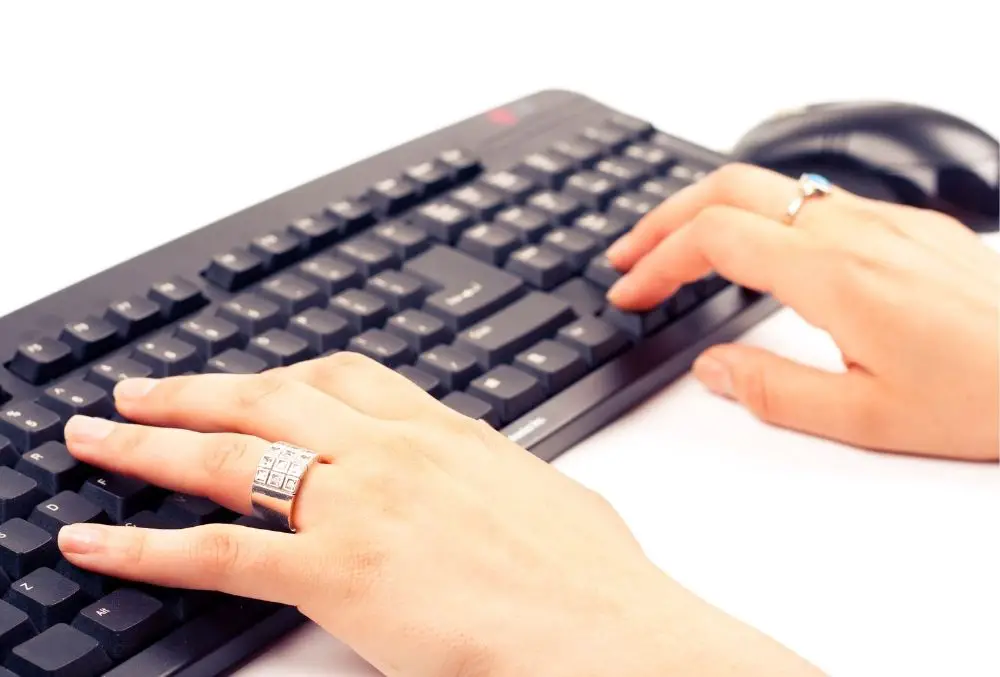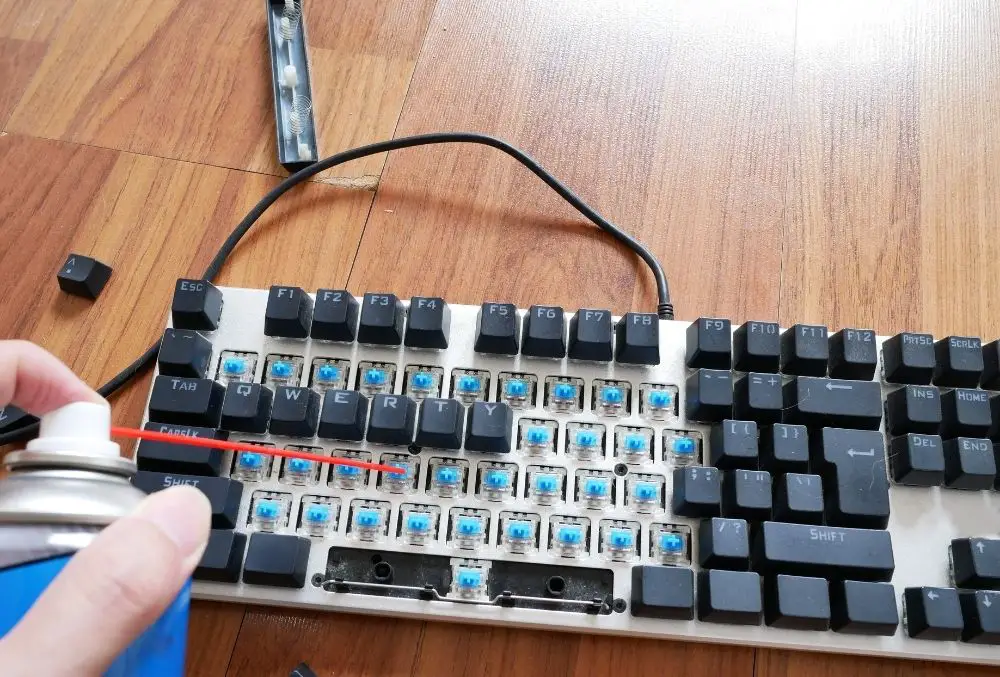Keyboards are incredibly useful, and whether you use a full-size or abridged version, you’ll be aware of just how noisy they can be particularly mechanical keyboards.
While standard membrane keyboards are already pretty quiet, these are becoming less and less popular, and there are also a few ways in which you can make membrane boards quieter, as they are already very quiet and don’t lend themselves well to customization or alteration.

Mechanical keyboards, on the other hand, are the noisiest keyboards available, and even boards that use quieter switches and quality components are still characteristically loud and clicky, making them very satisfying to use and incredibly accurate, but also very disruptive and distracting which can make them a problem for roommates and coworkers near you.
Table of Contents
Use A Desk Mat
Using a desk mat is one of the very best ways to make your keyboard quieter. It’s also very cheap and easy to implement and can have a surprising impact on how loud your keystrokes are, as well as other elements of computer usage.
Desk mats come in a range of shapes and sizes from simple keyboard-sized mats to huge desktop covers which offer maximum coverage and utility.
There are even mats that have lighting to match your keyboard or computer, allowing you to sync up your RGB aesthetic if that’s something you’re into. Look for nonslip bottoms to help prevent the mat from moving around while you type, and look for a good thickness so that the sound is dampened as much as possible.
Mats are relatively cheap and there are many good options from several brands, so definitely take advantage of this and personalize your desk a little too while you’re at it!
Lube Your Switches
Lubing your switches is another great way to reduce the noise of your keyboard.
It helps improve the feel and feedback of the switches, however, it is time-consuming and can take several hours as it is fiddly and requires the removal of each keycap individually which is awkward and requires a delicate and careful touch to avoid damaging them or the keyboard.
The lubrication of the switches helps reduce friction between the different parts of the switch and prevents vibration and noise.

There are several excellent lubricants you can use, but make sure to use one designed for use on keyboards, as other all-purpose lubricants may not be as effective or suitable and may even make your keyboard noisier and less effective.
Lubrication isn’t the only way to improve your keyboard however, let’s take a look at some other in-depth options with excellent results.
Install O Rings
Most mechanical keyboards will have sockets onto which the keycaps will slot, and this area of the keyboard is one of the areas that can create a lot of noise.
Addressing this issue can help prevent noise without reducing the feel and performance of the keyboard, making this a great and relatively simple option that isn’t as complex as other solutions to noisy keyboards.
While removing the keycaps to fit the rubberized O rings is required, it isn’t especially difficult or time-consuming, as keycaps are quite simple to remove and refit.
The rubberized O rings bring some of the benefits membrane keyboards benefit from, as the rubber absorbs some of the energy and noise that avid keyboard use creates.
Mod Your Switches/Clip and Wrap
This is one of the more difficult but most effective methods of making your keyboard quieter, but it isn’t for the faint of heart and takes a lot of effort.
The results are worth the effort, however.
This method involves modding your stabilizers to get a more stable and quiet action out of your keystrokes, and this is achieved by using a few things.
Each stabilizer needs to be modded individually, and each uses three steps that require a band-aid, clips, and lube.
The band-aids are applied to the area of the stabilizer which makes contact with the PCBand helps massively reduce the sound of your keystrokes, damping them considerably.
The clips are used to clip off the bottoms of the stabilizers to give them a more stable and flat surface with which to work. They become more stable and reduce the rattling that mechanical keyboards are sometimes criticized for.
Lube, again, like the other method, lube is a great way to improve your keyboard and lower its noise level.
This process can take several hours and be somewhat difficult, buts its very worthwhile and yields permanent results.
Replace Your Switches
Replacing your switches is one of the more fiddly and awkward ways to reduce noise, and often this is only really something an experienced keyboard enthusiast should attempt.
There are many kinds of switches, and not all of them are made equal. Some are designed for satisfying feedback and accuracy while others are designed for quietness, and often these attributes are somewhat exclusive.
For example, cherry MX red switches are among the quieter switches, but if you’ve already purchased a keyboard or like the design of a different option that doesn’t offer these switches, you may want to purchase cherry reds and add them to your board yourself.
This is legitimate if a little time-consuming, but ty payoff can be great as you’ll have a perfect keyboard that suits your exact needs.
Just make sure the switches you want are compatible with your board; and make sure to research the switches properly, ideally before you buy so you can skip this step and purchase a keyboard with your ideal switches already installed.
